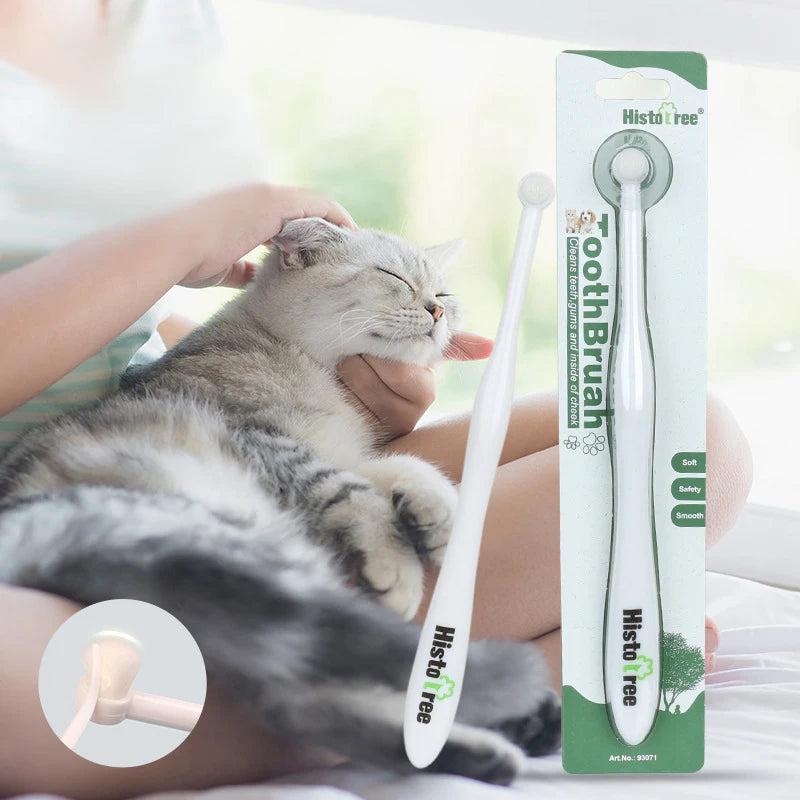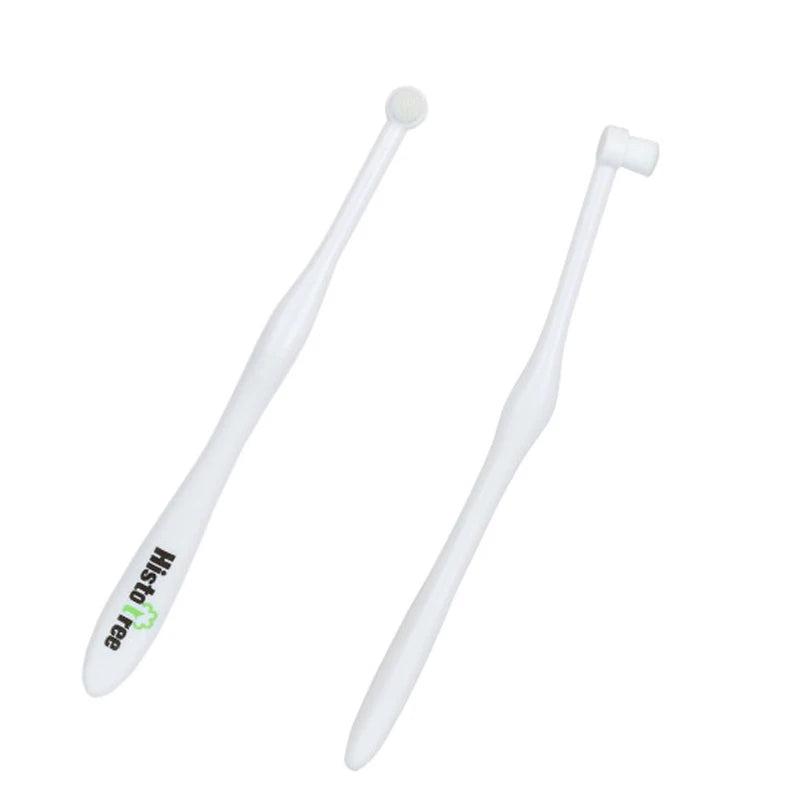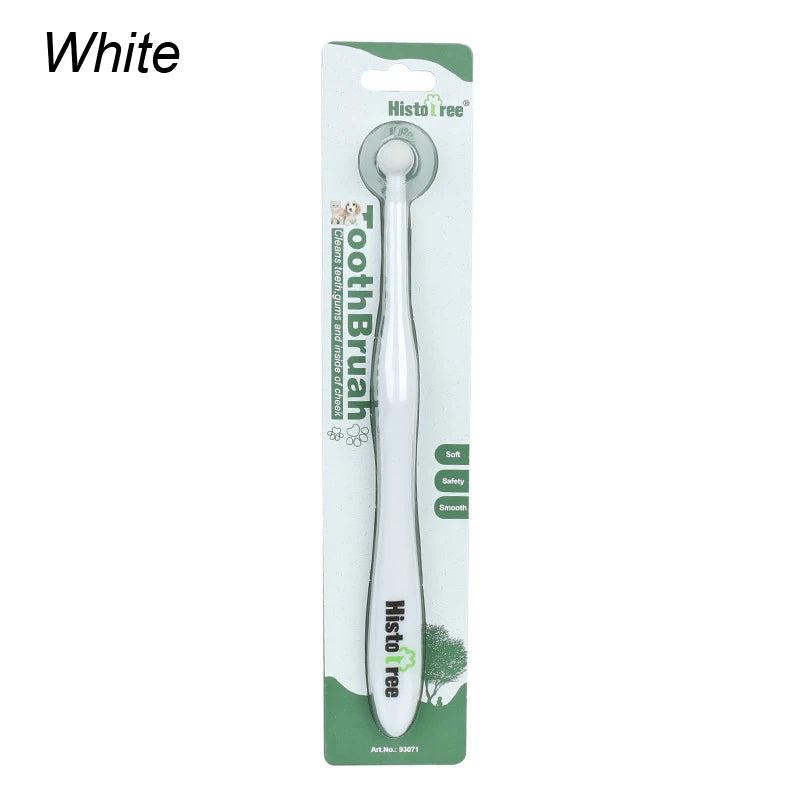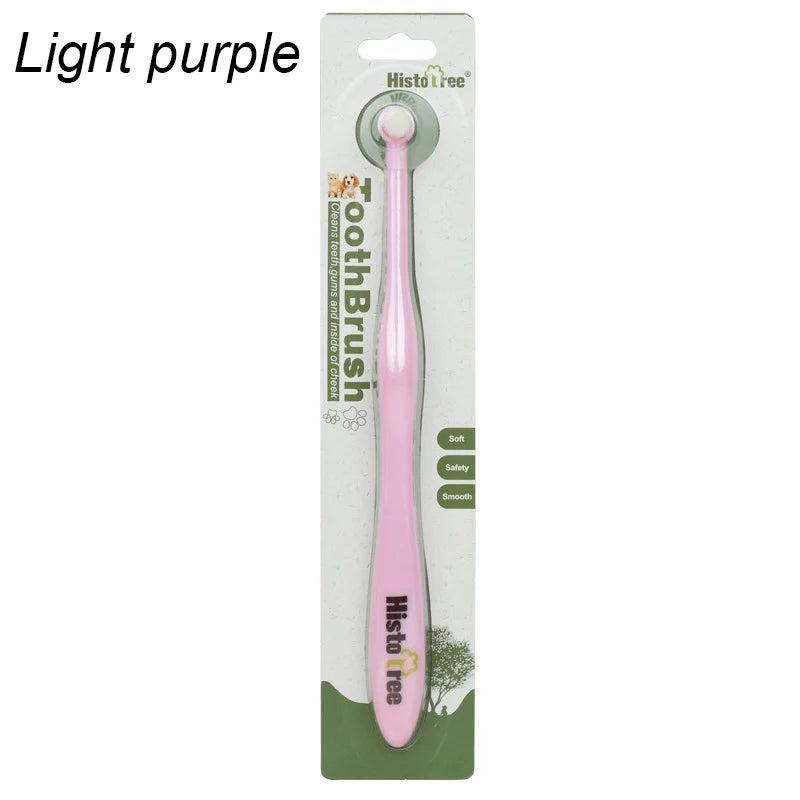How to Solve Bad Breath in Dogs with a Dog Toothbrush

Does your furry friend’s breath make you cringe? Bad breath in dogs, often called stinky dog breath, isn’t just unpleasant—it’s a sign of something deeper. Plaque buildup and gum disease are common culprits behind a dog’s bad breath, affecting nearly 70% of dogs between ages 3 and 10. Regular brushing with a dog toothbrush is the best way to tackle this issue. A soft option, like the Soft Round Head Dog Toothbrush, gently cleans your pet’s teeth and keeps their breath fresh.
Key Takeaways
-
Brushing your dog's teeth often helps stop bad breath. Try to brush their teeth every day for the best care.
-
Pick a soft toothbrush made for dogs, like the Soft Round Head Dog Toothbrush. It cleans teeth gently and won't hurt their gums.
-
Use dental chews and visit the vet regularly to keep your dog's breath fresh and their mouth healthy.
Common Causes of Bad Breath in Dogs

Bad breath in dogs, or what some call stinky dog breath, is a common issue in dogs that can stem from several causes. Understanding these causes can help you take the right steps to keep your furry friend’s mouth healthy and fresh.
Poor Oral Hygiene and Plaque Build-Up
One of the most common causes of bad breath in dogs is poor oral hygiene. When you don’t brush your dog’s teeth regularly, plaque builds up on their teeth. Over time, this plaque hardens into tartar, which irritates the gums and leads to infections. Did you know that periodontal disease affects up to 80% of dogs over three years old? This condition not only causes bad dog breath but also leads to more serious dental issues if left untreated.
Gum Disease and Dental Problems
Gum disease and other dental issues are major contributors to bad breath in dogs. When plaque and tartar accumulate, they cause inflammation in the gums, known as gingivitis. This can progress to periodontal disease, which damages the tissues supporting the teeth. Dogs suffering from bad breath often have underlying dental problems that need attention. Regular brushing with a dog toothbrush can help prevent these issues.
Diet and Food Residue
What your dog eats plays a big role in their breath. Certain foods, especially those with strong odors, can leave residue in their mouth, leading to bad breath. Dogs that eat foul-smelling substances, like garbage or animal waste, are more likely to have stinky dog breath. Adding dental chews or treats to their diet can help reduce plaque and freshen their breath.
Underlying Health Conditions
Sometimes, bad breath in dogs signals a deeper health problem. Conditions like kidney disease, liver disease, or diabetes can affect your dog’s breath. For example, kidney disease can make their breath smell like ammonia, while diabetes may cause a sweet or acetone-like odor. If your dog’s bad breath persists despite good oral hygiene, it’s a good idea to consult your vet to rule out any serious health issues.
By addressing these common causes of bad breath, you can help your dog enjoy better oral health and fresher breath.
Why a Dog Toothbrush Helps Stop Bad Breath in Dogs
Stopping Plaque and Tartar Build-Up
Plaque and tartar cause bad breath in dogs. Brushing your dog’s teeth often removes plaque before it turns into tartar. This easy routine can prevent painful dental problems. Using a toothbrush made for dogs works best to stop tartar. Some dog breeds and dogs with gum issues need extra care. Brushing regularly keeps their breath fresh and improves their health.
Keeping Gums Healthy with a Gentle Toothbrush
Healthy gums are important for clean teeth. A soft toothbrush, like the Soft Round Head Dog Toothbrush, cleans teeth without hurting gums. Brushing three times a week keeps gums healthy in dogs without problems. Dogs with gum disease need daily brushing to stop it from getting worse. Brushing removes plaque, which prevents gum swelling and keeps gums strong. The right toothbrush makes brushing easier for you and your dog.
Why Brushing Matters for Dog Dental Health
Brushing isn’t just for fresh breath—it’s key for dental care. Regular brushing stops plaque and tartar, saving money on vet cleanings. Experts say brushing every day is the best way to keep teeth healthy. Dogs that get brushed often are less likely to have gum disease. Adding brushing to your dog’s routine helps them have strong teeth and gums for life.
How to Use a Dog Toothbrush to Stop Bad Breath

Choosing the Right Dog Toothbrush and Toothpaste
Picking the right tools makes brushing easier for you and more comfortable for your dog. A toothbrush designed for pets, like the Soft Round Head Dog Toothbrush, works best. Its gentle bristles clean effectively without hurting sensitive gums. The round head design ensures thorough cleaning, even in hard-to-reach spots. Pair it with pet-safe toothpaste, which comes in flavors dogs love, like chicken or peanut butter. Avoid human toothpaste—it contains ingredients that can harm your dog.
Benefits of a Soft Round Head Design
The Soft Round Head Dog Toothbrush stands out for its ultra-soft bristles and ergonomic handle. These features make teeth cleaning stress-free for both you and your dog. The round head design allows you to clean every angle of your dog’s teeth, removing plaque and tartar buildup. This toothbrush is perfect for small breeds and puppies with delicate mouths.
Introducing Your Dog to the Brushing Routine
Getting your dog used to brushing takes patience. Start by letting them sniff and taste the toothpaste. Gently touch their mouth and reward calm behavior with treats or praise. Gradually introduce the toothbrush, focusing on short, positive sessions. Make brushing part of their daily routine to reduce resistance over time.
Step-by-Step Brushing Technique
Follow these steps to brush your dog’s teeth effectively:
-
Use a toothbrush that fits your dog’s size.
-
Apply a small amount of pet toothpaste to the brush.
-
Hold the brush at a 45-degree angle to your dog’s teeth.
-
Brush in gentle circular motions, focusing on the gum line.
-
Start with one area and gradually cover all teeth.
-
Reward your dog after each session to make it enjoyable.
Tips for Stress-Free Dog Teeth Cleaning
Keep brushing sessions short and sweet. Choose a quiet space where your dog feels relaxed. Use a calm voice and gentle movements to reassure them. If your dog resists, don’t force it—take a break and try again later. Consistency is key to making teeth cleaning a positive experience.
Extra Tips to Fix Bad Breath in Dogs
Using Chews and Toys for Dental Care
Chews and toys can help keep your dog’s breath fresh. They lower harmful bacteria in the mouth, which causes bad breath. Studies show dental chews like VeggieDent can cut bacteria by 50%. Chewing scrapes off plaque and tartar, improving oral health. Plus, dogs enjoy the tasty and fun experience!
Dental toys are another helpful choice. They clean teeth and massage gums during playtime. Look for toys with ridges or grooves to reach tricky spots. Adding these to your dog’s routine is a simple way to fight bad breath.
Feeding Healthy Food for Better Breath
Your dog’s food affects their breath. A balanced diet, especially with dry food, helps oral health. Dry kibble scrapes plaque as your dog chews, acting like a toothbrush. Research shows dogs eating dry food have fewer oral problems than those eating soft food.
Feeding your dog once daily instead of often can also help. Studies say dogs fed less often have fewer oral issues. Pairing good food with chews or other remedies can improve your dog’s breath.
Visiting the Vet Regularly
Vet visits are key for your dog’s dental health. Vets find and fix problems early, stopping pain and serious issues. Professional cleanings remove tartar and plaque missed at home.
If bad breath continues, check for swollen gums or loose teeth. Early care prevents discomfort and keeps your dog’s breath fresh.
Adding Water Additives for Cleaner Mouths
Water additives are easy and effective for fresher breath. Add them to your dog’s water to reduce plaque and tartar. They also help gums stay healthy, which keeps the mouth clean.
Experts recommend certain water additives for their proven benefits. They’re great if brushing isn’t always possible. With regular use, your dog will have fresher breath and a healthier smile.
Recommended Dog Toothbrush for Best Results

Why the Soft Round Head Dog Toothbrush Stands Out
360° Cleaning Angle for Effective Plaque Removal
The Soft Round Head Dog Toothbrush is a game-changer for dog dental care. Its 360° cleaning angle ensures you can reach every corner of your dog’s mouth. This design makes it easier to remove plaque and tartar, even in those tricky spots. You’ll notice a big difference in your dog’s teeth cleaning routine because this toothbrush works so efficiently. It’s perfect for keeping your dog’s breath fresh and their teeth sparkling clean.
Gentle Bristles for Sensitive Gums
Does your dog hate brushing because it hurts their gums? This soft dog toothbrush solves that problem. Its ultra-soft bristles are gentle enough for sensitive gums but still tough on plaque. You won’t have to worry about causing discomfort while brushing. Instead, your dog will feel more relaxed, making the experience stress-free for both of you.
Ideal for Puppies and Small Breeds
If you have a small dog or a puppy, finding the right toothbrush can be tricky. The Soft Round Head Dog Toothbrush is designed specifically for small breeds. Its compact size and ergonomic handle make it easy to use, even for tiny mouths. Whether you have a Yorkie, Chihuahua, or a young pup, this toothbrush is the perfect fit.
Where to Buy the Best Dog Toothbrush Online
Ready to upgrade your dog’s dental care routine? You can find the Soft Round Head Dog Toothbrush online for just $9.99. It’s available on trusted pet care websites and marketplaces. Look for retailers that offer fast shipping and customer reviews to ensure you’re getting the best deal.
Don't miss out on giving your pet a healthy smile! Get the Soft Round Head Pet Toothbrush for Dogs today for just $9.99!
🛒 Shop now to give your furry friend the gift of a healthy smile and fresh breath!
Solving stinky dog breath starts with regular brushing using a dog toothbrush. Experts say 80% of dogs face dental issues by age three, often causing bad dog breath. The Soft Round Head Dog Toothbrush makes brushing easy and stress-free. Add dental chews and vet visits to keep your dog’s breath fresh and healthy.
FAQ

What’s the best way to introduce my dog to brushing?
Start slow! Let your dog sniff the toothbrush and taste the toothpaste. Use treats and praise to make it a positive experience.
🐾 Tip: Begin with short sessions and gradually increase the time.
How often should I brush my dog’s teeth?
Brush your dog’s teeth daily for the best results. If that’s tough, aim for at least three times a week to maintain oral health.
Can I use human toothpaste for my dog?
No, human toothpaste contains harmful ingredients for dogs. Always use pet-safe toothpaste with flavors your dog loves, like chicken or peanut butter.
🚨 Note: Human toothpaste can upset your dog’s stomach or cause toxicity.
See Also
Effective Techniques for Removing Odors and Stains from Dog Beds
Top Three Squeaky Dog Toys to Alleviate Your Dog's Anxiety
Seven Benefits of Using a Dog Treat Dispenser for Mental Engagement








